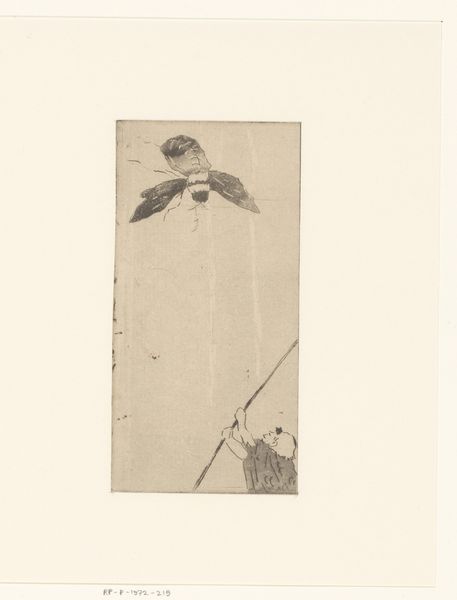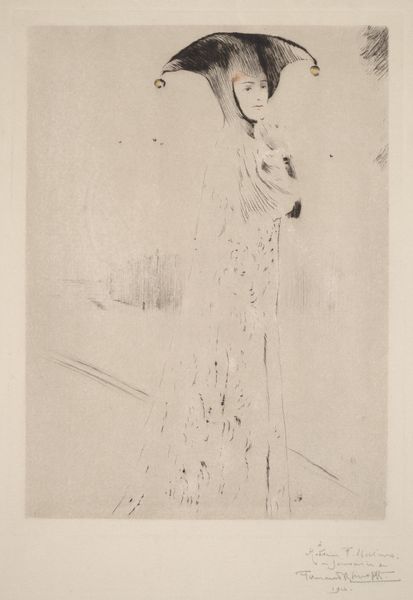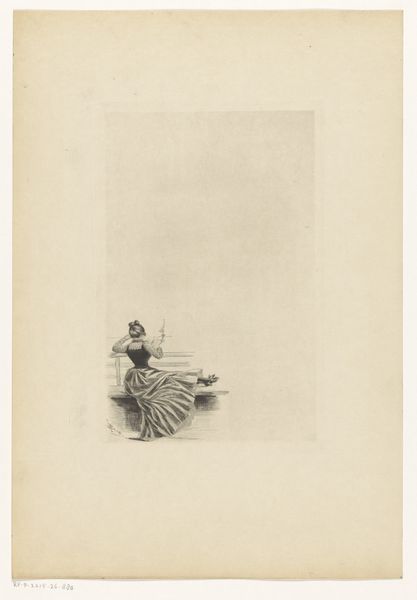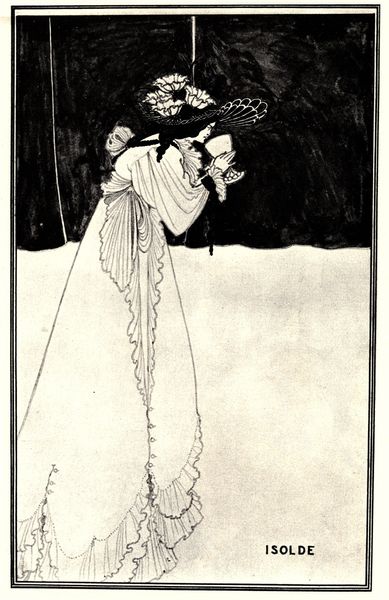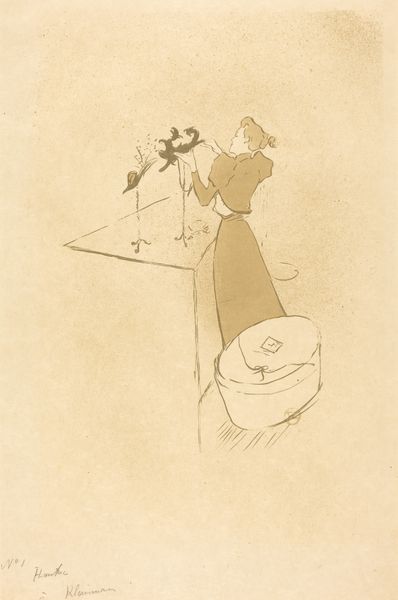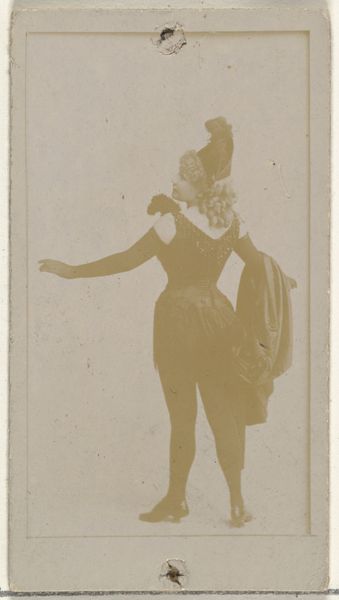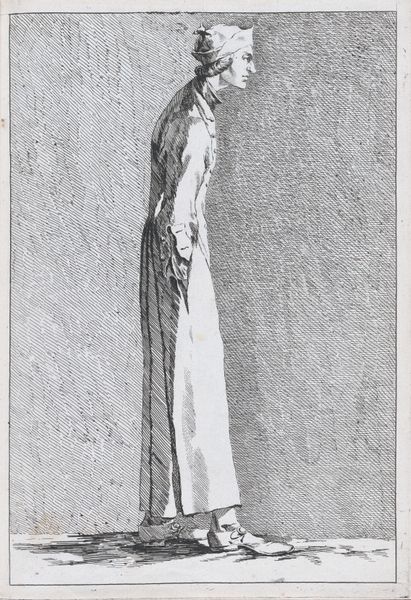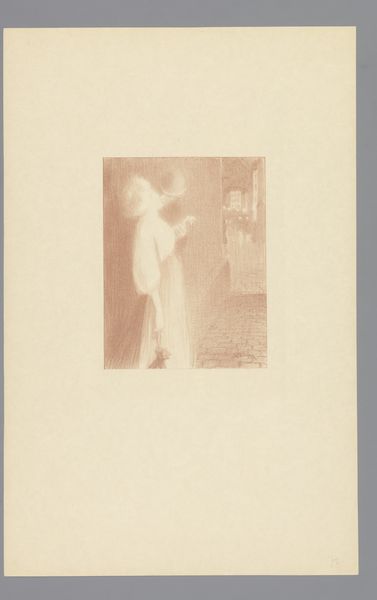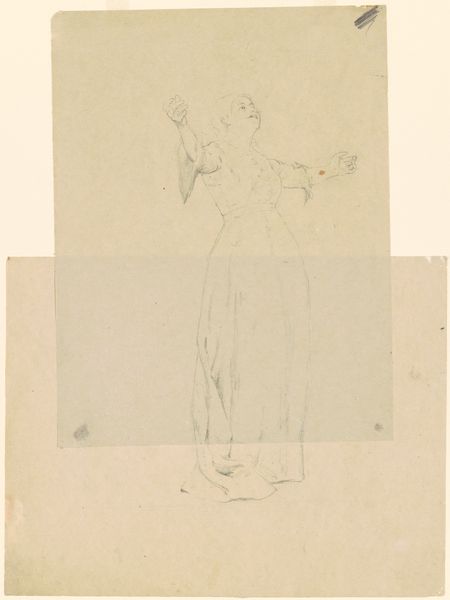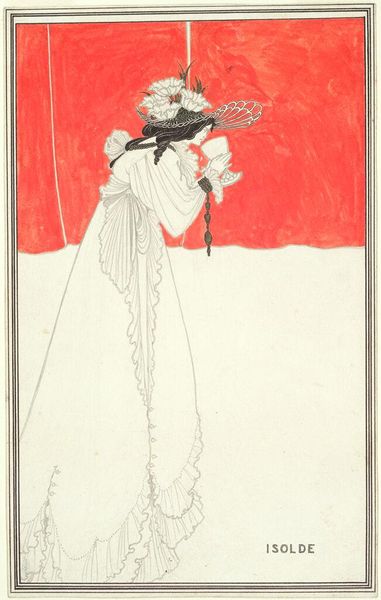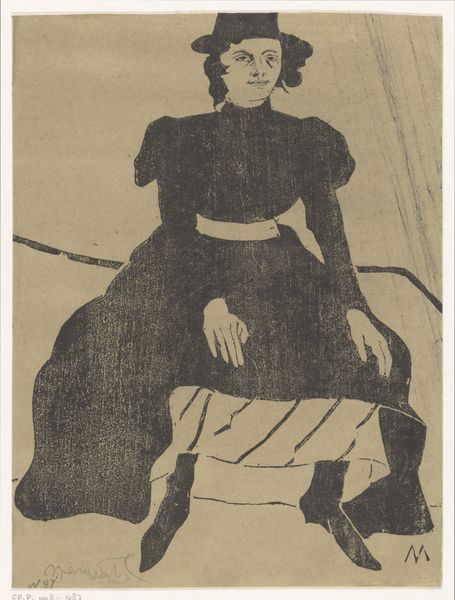
Copyright: National Gallery of Art: CC0 1.0
Editor: Here we have Toulouse-Lautrec's "The Milliner", from 1893. It's a lithograph print, mostly blue on off-white paper, showing the silhouette of a woman. It almost looks unfinished, and has this ethereal quality. What draws your attention to this print? Curator: I see a fascinating example of lithography being used to depict the modern Parisian woman. What strikes me immediately is the simplification of form – almost a mass-produced, readily consumable image. How does Lautrec's choice of lithography, traditionally a commercial technique, affect how we perceive this figure? Editor: I suppose it elevates something considered ordinary into art, like turning the mass-produced into the unique. Curator: Exactly! We have to consider the societal implications: the milliner as a worker, the hats she crafts as commodities, and the entire world of fashion as industry. Look at how the textures within the lithograph itself evoke the idea of fabrics. It blurs the line between high art and the everyday, isn’t it? Do you think that the limited use of colour shifts the focus back onto form? Editor: It does seem so. It's less about portraying reality accurately and more about the essence of form, especially the shape of the dress against the plain background. The choice of a single color hints at a mechanized process, but then again, each print would have its own nuances. Curator: Indeed, that tension between mechanical reproduction and individualized touch is critical. Lautrec takes a commercial printing technique and elevates a milliner, a working-class subject, immortalising her with his methods. In so doing, the question we must ask is: has the subject become reduced to the method? Editor: I'm now viewing it as commentary of the time, both artistic and societal. Thanks. Curator: Yes, examining the materials and methods reveals Lautrec's complex engagement with his world. It goes far beyond the surface representation.
Comments
No comments
Be the first to comment and join the conversation on the ultimate creative platform.
